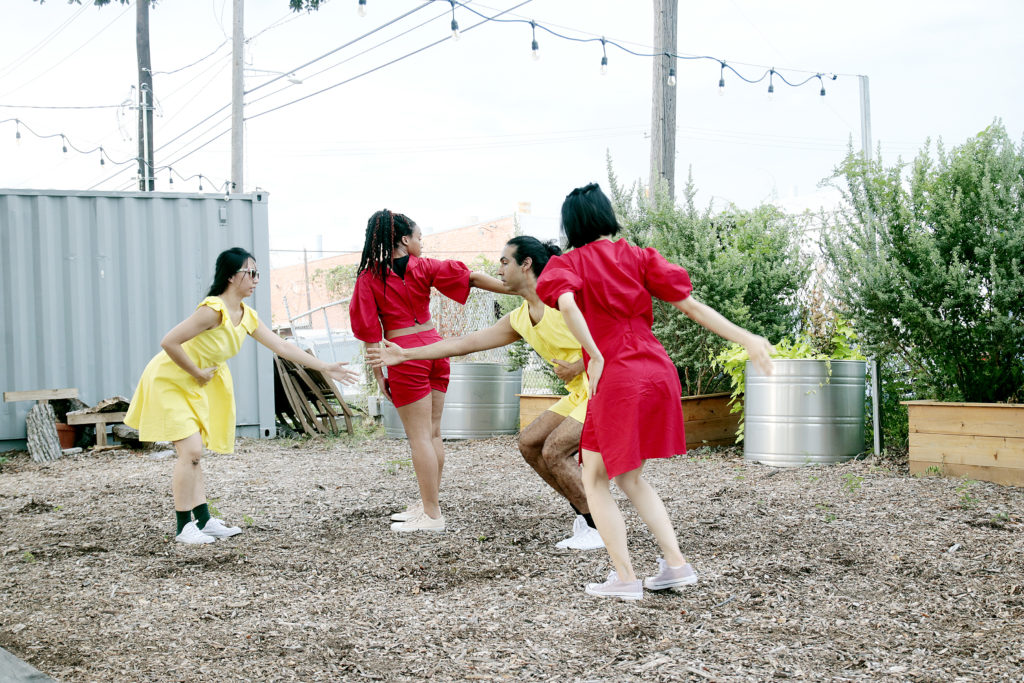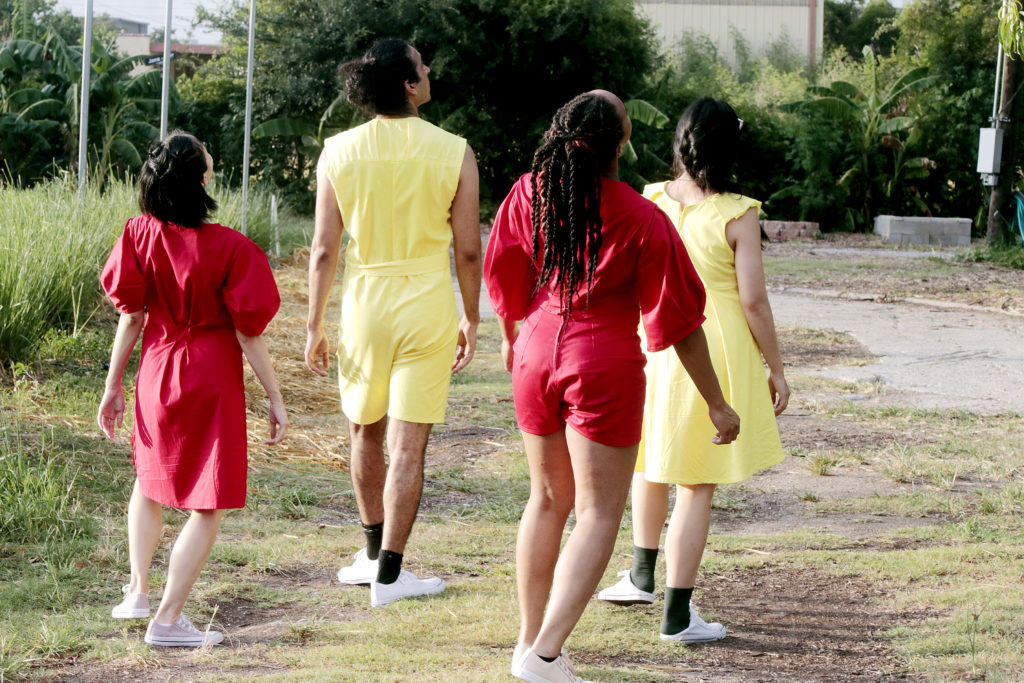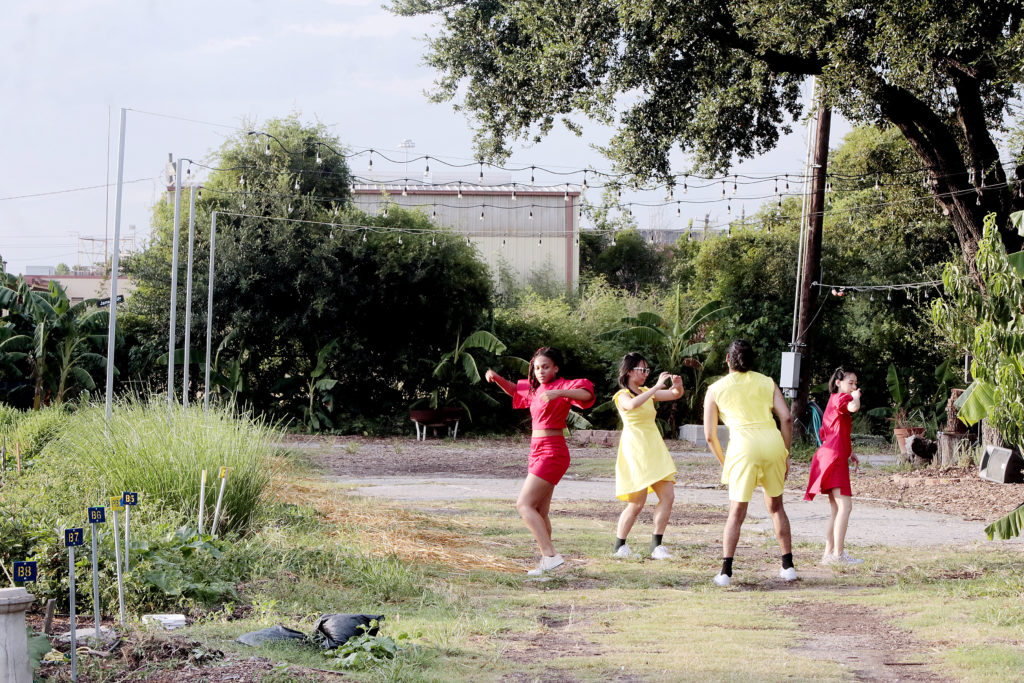Lori Yuill Uses an Urban Garden and Dance to Spark Community

All photos by Pin Lim
Sweet potatoes, chili peppers, eggplant. Sweat, dirt. Ants, flies, cicadas (or was that the music?). While these words easily drum up the image of a garden, they are less expected when describing a setting for a dance piece. Pilot Dance Project recently produced a work called Green Zebras choreographed by Lori Yuill. Yuill’s work, inspired by Animal, Vegetable, Miracle by Barbara Kingsolver, was performed within Finca Tres Robles, an urban farm located in Houston’s East End.
I always find site-specific work exciting. Having been removed from a theater space, it challenges everything I know about viewing dance. The audience is asked to not only consider the movement but its relationship to the destination of choice. What sounds unique to that environment do we hear, and how does that add to the overall work? Is the choreographer interested in virtuosity and technique, or did they take inspiration from everyday movement by the people who regularly inhabit the space? While I felt clearer on some answers more than others, Yuill’s work, overall, provided an enjoyable experience.

Green Zebras included five dancers (although I only saw four), original music composed by Anthony Barilla, and costumes designed by Ashley Horn. Upon arrival, Yuill personally greeted her guests and encouraged them to wander about the garden. By the time I arrived, the garden was already occupied by a few of the dancers. They were moving, perhaps improvising, at their own pace. The viewing space consisted of a series of picnic tables arranged in a circle. The seating options encouraged, rather required, the audience members to sit with others they may not have previously known. Many entered into conversation with one another prior to the show’s official start.
The work itself very clearly consisted of a number of phrases that were re-interpreted and varied. While most of the dance occurred in the central part of the garden, entirely visible from the picnic tables, one portion of the piece pulled the audience from the tables to a plot in the garden that housed a rusty carport and an equally rundown car. Moving back to the heart of the garden, the dancers formed a human sculpture that dancer Ayan Felix disassembled and then reassembled in a new section of the garden.
Felix has an almost tangible presence about her when she performs. It’s highly captivating. While watching her, I find myself less concerned with the technical execution of the steps and vastly more interested in the story she clearly has to tell.
The music felt relevant and in support of the work. Experimental and ambient, Barilla’s composition appeared to comment on the sounds of the neighborhood: the soft whirring of machinery from nearby factories, the high-pitched buzz of a fly, the vibrations of a cicada, and charged with the energy intrinsic to a place of growth and creation.

The dancers completed their last phrase, and the music lowered to a stop. Typically this signals an end of a performance. However, for Green Zebras, that was not the case. The performance included a potluck dinner where dancers and audience members continued socializing. Included on each table was a menu of items. This menu prompted audience members to choose an ingredient (a specific phrase), a flavor profile (quality and pace), and the size of the course (the number of dancers). I was the first to order: a “family size” of “Weeping Willow,” “salty.”
This whimsical addition, the dirt in between my toes, the ant bites on my feet, and the conversations I had over someone’s homemade fried chicken all contributed to my performance experience. While I felt the work was complete, I did find myself asking a few more questions: Was there significance to the red and yellow costumes? What was Green Zebras referencing? Were there certain aspects to this work I was missing having not read the book?
Pilot Dance Project is committed to producing new and innovative work that focuses on community and the shared human experience. The choice to produce Yuill’s work certainly aligns with that goal. Through dance and the celebration of food, Yuill composed a pleasant evening.



Recent Comments